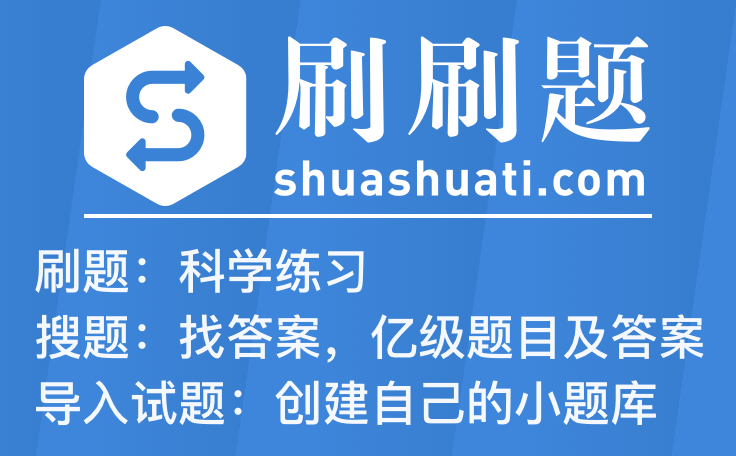皮皮学,免费搜题
登录

搜题
【简答题】
 应用英语II第三的学习任务和作业(2020.03.16-2020.03.22) 一 . 登陆慕课学习第三的内容 4. The humanities: Out of date?-2 4.1 Language Points 4.2 Reading Skills 4.3 Writing Strategy 4.4 Summary 4.5 Quiz ( 注意看完视频完成测试) 二 . 熟读并翻译科技英语 unit 6 的 Reading A 的第 7.8.9 段内容(蓝色字体的三段),罗列出这三个段落的新词汇和短语,请大家认真书写,开学由统一收纸质版上来交给我。 Tower Bridge of London 1 London’s big question was: What kind of bridge would allow carts and horses to cross over it, and tall ships to sail under it? Horace Jones, the City Architect, had an answer: A bascule bridge. (The word bascule comes from the French word for “ seesaw ”.) His bridge would raise its bascules to let thetall ships pass through, and it had walkways, high above the ships’ masts , where pedestrians could cross as the ships passed underneath. Sadly, Horace Jones never saw Tower Bridge. Hedied in 1887 before the foundations were complete. The famous engineer John Wolfe Barry, who had helped Horace Jones with his bascule bridge design, oversaw the construction of Tower Bridge. 2 How can you build a bridge like that, with all that boat traffic on the river? You start with the foundation. And in the case of Tower Bridge, you start deep, deep, deep under the surface of the Thames—10 meters below the surface of the water, in fact. 3 Work began on 22nd April 1886. Divers prepared the riverbed for the massive piers . It must have been a scary job—after all, this was 1886. They didn’t have scuba gear and safety devices and computer equipment. The divers wore leather suits with metal helmets , and they were connected to the surface by air tubes. They prepared the riverbed. 4 Above them, on barges, other workers created caissons. Caissons are open-ended watertight boxes, with sharp edges. Workers lowered the caissons into the river — down, down, down— until they rested on the riverbed. While the sharp edge of the caisson dug into the riverbed, the workers forced them deep into the soil. They were sunk to 9 meters deep, into watertight London clay. The London clay would support the enormous weight of Tower Bridge. 5 Twenty-four caissons were constructed (12 in each pier), and when they were complete, they were filled with concrete. The workers left space within each pier for steel pillars (which would support the towers), and for the bascule machinery. It took four years to construct the piers. 6 The steel for the towers was made by William Arrol &Company in Scotland, then shipped down to London and brought up the river on barges. There wasn’t much space to store equipment and materials, so the steel was brought up the river when it was needed. Crews of workers set about 200 rivets per day—by hand. There are two million rivets in Tower Bridge— so you can do the math. The work took a long time. Slowly but surely, the steelwork rose from the Thames like a huge black skeleton. Each tower had four steel pillars. The two pillars on the land-side of the tower would support the suspension chains, while the river-side pillars would support the high level walkways. 7 When the pillars were finished, workers started building the high level walkways. They worked 46 meters above the river, without safety nets! Boats would pass below them, so they had to be extra careful not to drop a tool onto someone’s head. The workers on Tower Bridge were paid an outstanding wage of £ 2 per week. It may not seem like much, but it was twice the wage of a London policeman. Separate crews worked on cantilevers extending from each tower. (A cantilever is a section supported at one end, which can bear its own weight.) When the cantilevers extended far enough toward the middle, a central section linked them together. William Arrol & Company in Scotland had tested their steel to make sure it would all fit snugly together once it arrived at Tower Bridge. 8 The suspension chains of Tower Bridge are really heavy. They weigh one ton per foot. They needed to support all that weight, so the workers built an abutment on each land-end of Tower Bridge. (An abutment is a structure which anchors suspension chains.) Then they built the suspension chains, using scaffolding to support them as they went. When the chains were finished, the workers added rods and girders to keep the chains from swinging in the wind. 9 The bascules were next. Remember, these were the “arms” of Tower Bridge which would raise and lower to let the ships pass through. They built sections forty feet long, strengthened with long girders and cross-girders. Then they built the counterbalance.(The counterbalance is the part which balances the bascule, kind of like a person on the seat of a seesaw. If you have only one person, the seesaw can’t move. The bascule itself had a weight, so it needed a counterbalance in order to go up and down.) On the counterbalance, they constructed a huge gear, which fit into the gear of the steam engine. When the steam engine built up pressure, the gears would turn, opening the bridge for ships. When it released pressure, the bascules lowered. 10 With its bascules, the suspension chains and the steam engine, Tower Bridge was a triumph of engineering. Its nickname was “the Wonder Bridge”. After 8 years of hard work, Tower Bridge was finally finished and ready for its grand opening. 11 On 30th June 1894, the Thames River was packed with barges, steamships and ferries. People crowded along the embankments and bridges for a peek at the new bridge. The Prince and Princess of Wales arrived amidst the excitement. The Prince made an official declaration that the bridge was open for traffic; then he pushed a button which raised the bascules for the first time.
应用英语II第三的学习任务和作业(2020.03.16-2020.03.22) 一 . 登陆慕课学习第三的内容 4. The humanities: Out of date?-2 4.1 Language Points 4.2 Reading Skills 4.3 Writing Strategy 4.4 Summary 4.5 Quiz ( 注意看完视频完成测试) 二 . 熟读并翻译科技英语 unit 6 的 Reading A 的第 7.8.9 段内容(蓝色字体的三段),罗列出这三个段落的新词汇和短语,请大家认真书写,开学由统一收纸质版上来交给我。 Tower Bridge of London 1 London’s big question was: What kind of bridge would allow carts and horses to cross over it, and tall ships to sail under it? Horace Jones, the City Architect, had an answer: A bascule bridge. (The word bascule comes from the French word for “ seesaw ”.) His bridge would raise its bascules to let thetall ships pass through, and it had walkways, high above the ships’ masts , where pedestrians could cross as the ships passed underneath. Sadly, Horace Jones never saw Tower Bridge. Hedied in 1887 before the foundations were complete. The famous engineer John Wolfe Barry, who had helped Horace Jones with his bascule bridge design, oversaw the construction of Tower Bridge. 2 How can you build a bridge like that, with all that boat traffic on the river? You start with the foundation. And in the case of Tower Bridge, you start deep, deep, deep under the surface of the Thames—10 meters below the surface of the water, in fact. 3 Work began on 22nd April 1886. Divers prepared the riverbed for the massive piers . It must have been a scary job—after all, this was 1886. They didn’t have scuba gear and safety devices and computer equipment. The divers wore leather suits with metal helmets , and they were connected to the surface by air tubes. They prepared the riverbed. 4 Above them, on barges, other workers created caissons. Caissons are open-ended watertight boxes, with sharp edges. Workers lowered the caissons into the river — down, down, down— until they rested on the riverbed. While the sharp edge of the caisson dug into the riverbed, the workers forced them deep into the soil. They were sunk to 9 meters deep, into watertight London clay. The London clay would support the enormous weight of Tower Bridge. 5 Twenty-four caissons were constructed (12 in each pier), and when they were complete, they were filled with concrete. The workers left space within each pier for steel pillars (which would support the towers), and for the bascule machinery. It took four years to construct the piers. 6 The steel for the towers was made by William Arrol &Company in Scotland, then shipped down to London and brought up the river on barges. There wasn’t much space to store equipment and materials, so the steel was brought up the river when it was needed. Crews of workers set about 200 rivets per day—by hand. There are two million rivets in Tower Bridge— so you can do the math. The work took a long time. Slowly but surely, the steelwork rose from the Thames like a huge black skeleton. Each tower had four steel pillars. The two pillars on the land-side of the tower would support the suspension chains, while the river-side pillars would support the high level walkways. 7 When the pillars were finished, workers started building the high level walkways. They worked 46 meters above the river, without safety nets! Boats would pass below them, so they had to be extra careful not to drop a tool onto someone’s head. The workers on Tower Bridge were paid an outstanding wage of £ 2 per week. It may not seem like much, but it was twice the wage of a London policeman. Separate crews worked on cantilevers extending from each tower. (A cantilever is a section supported at one end, which can bear its own weight.) When the cantilevers extended far enough toward the middle, a central section linked them together. William Arrol & Company in Scotland had tested their steel to make sure it would all fit snugly together once it arrived at Tower Bridge. 8 The suspension chains of Tower Bridge are really heavy. They weigh one ton per foot. They needed to support all that weight, so the workers built an abutment on each land-end of Tower Bridge. (An abutment is a structure which anchors suspension chains.) Then they built the suspension chains, using scaffolding to support them as they went. When the chains were finished, the workers added rods and girders to keep the chains from swinging in the wind. 9 The bascules were next. Remember, these were the “arms” of Tower Bridge which would raise and lower to let the ships pass through. They built sections forty feet long, strengthened with long girders and cross-girders. Then they built the counterbalance.(The counterbalance is the part which balances the bascule, kind of like a person on the seat of a seesaw. If you have only one person, the seesaw can’t move. The bascule itself had a weight, so it needed a counterbalance in order to go up and down.) On the counterbalance, they constructed a huge gear, which fit into the gear of the steam engine. When the steam engine built up pressure, the gears would turn, opening the bridge for ships. When it released pressure, the bascules lowered. 10 With its bascules, the suspension chains and the steam engine, Tower Bridge was a triumph of engineering. Its nickname was “the Wonder Bridge”. After 8 years of hard work, Tower Bridge was finally finished and ready for its grand opening. 11 On 30th June 1894, the Thames River was packed with barges, steamships and ferries. People crowded along the embankments and bridges for a peek at the new bridge. The Prince and Princess of Wales arrived amidst the excitement. The Prince made an official declaration that the bridge was open for traffic; then he pushed a button which raised the bascules for the first time.
 分享
分享
 反馈
反馈参考答案:

举一反三
【判断题】移液管的体积校正:一支10.00mI (20°C)的移液管,放出的水在20°C时称量为9.9814g,已知该温度时1mL的水质量为0.99718g,则此移液管在校准后的体积为10.01mL。( )
A.
正确
B.
错误
【判断题】Jupyter Notebook不仅可以编辑和运行程序,而且还可以将程序和文档组织在一起,将代码、图像、注释、公式、图形、甚至运行结果都整合在同一个文档中,编写出漂亮的交互式文档。
A.
正确
B.
错误
【简答题】关于得道的方法,道教分为______养生与_______修养两个方面。
参考解析:

知识点:

题目纠错 0
发布

 复制链接
复制链接 新浪微博
新浪微博 分享QQ
分享QQ 微信扫一扫
微信扫一扫